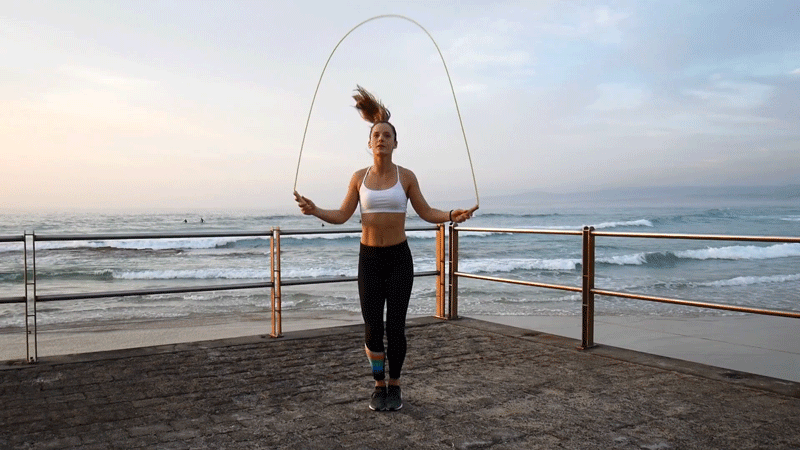
instructions
1. Choose a Jump Rope
Jump ropes are available in all sorts of materials and with a variety of high-tech handles. Some of these materials help jump ropes turn faster with a smooth motion; some options even have a swivel action between the cords and handles. The rope you buy should be comfortable to hold and have a smooth spin.
Weighted jump ropes may help develop upper body muscle tone and endurance. These ropes are not really for beginners, and they aren't necessary for those who want an agility workout, either. If you do buy a weighted rope, be sure the weight is in the rope rather than the handles to avoid straining your wrists, elbows, and/or shoulders.
Size your jump rope by standing on the center of the rope and pulling the handles up along your sides. For beginners, the handles should just reach your armpits. As you become more skilled and fit, you may shorten your jump rope. A shorter rope will turn faster, forcing you to jump more.
2. Jump Rope Technique
As with any exercise, using proper technique helps ensure a more safe and effective workout.
Good jumping form includes keeping your shoulders relaxed and elbows in and slightly bent.
You should have very few upper body movements.
Most of the turning power and motion should come from your wrists, not your arms.
While jumping, keep your knees slightly bent. Bounce softly up and down on the toes. Your feet should leave the floor just enough to allow the rope to pass under.
Land softly on the balls of the feet to avoid knee injuries.
Don't jump high or land hard.
Use a jumping surface that is smooth, free of obstacles and forgiving. Wood, a sports court, or a rubberized mat are best. Never jump on concrete.
Have patience and start slowly.
3. Warm Up Before Jumping Rope
Before you begin jump roping, do a gentle, 5 to 10-minute warm-up. This can include walking or jogging in place, or even slow tempo rope jumping.
4. Gradually Increase Time and Intensity
Jumping rope can be a relatively intense, high-level exercise. Be sure to start slowly and increase gradually. You might try about three 30-second sets at the end of your usual workout for the first week. Depending upon your current fitness level, you may feel nothing or some slight soreness in the calf muscles. This can help you determine how much to do on your next jump rope session. Gradually increase the number of sets you perform—or the duration for which you perform them—over several weeks until you work up to about ten minutes of continuous rope jumping.
Stretching After Jumping Rope
A good cool down and stretching session after jumping rope is helpful to gradually reduce your heart rate and relax your muscles.4
Jump Rope Sample Workouts
Rope jumping is a sport, and there are a wide variety of variations of workouts. Here are some of the more popular combinations:
Double foot jump — This is the basic jump. Both feet take off from the ground slightly and land together.
Alternate foot jump — This uses a skipping type of step, and you land more prominently on one foot after each rope spin.
Running step — A slight jog is incorporated while jumping over the rope.
High step — A moderate pace with a high knee lift will increase intensity.
Cross step — While in the air during the jump phase, cross your lower legs and land with legs crossed. Continue to switch with each jump.
Side-to-side — Alternate landing areas from left to right.
